“Next to reasoning, the greatest handicap to the optimum development of Man lies in the fact that this planet is just barely habitable. Its minimum temperatures are too low, and its maximum temperatures too high. Its day is not long enough, and its night is too long... These factors encourage depression, fear, war, and lack of vitality. They describe a planet, which is by no means perfectly devised for the nurturing or for the perpetuation of a higher intelligence.” -James Thurber
It's been just about three years, now, since the first announced discovery of a planet in another star system found within its parent star's habitable zone.
That star happened to be Gliese 581, a red dwarf star -- an M-class star -- located about 20 light years away. There are a whole slew of relatively nearby stars named "Gliese" followed by a number; that's because in the second half of the 20th Century, the German astronomer Wilhelm Gliese started doing a massive survey of stars located within 20 parsecs (or 65 light-years) of Earth. It's been extended since then, and we now have a very extensive catalogue of thousands of stars located in our local neighborhood of 82 light-years or so: the Gliese Catalogue of Nearby Stars.
The vast majority of these stars are M-class stars, the lowest-mass, reddest, and longest-lived type. It turns out -- as we've learned from this and other surveys -- that these red dwarfs, the M-class stars, are by far the most common type of star in the Universe: some 3-out-of-every-4 stars are like them! The Sun, a G-class star, is a relative rarity, as it's brighter and more massive than 95% of the other stars out there.
So it's no surprise that the first star that they discovered a planet potentially capable of harboring life-as-we-know-it (i.e., a planet with Earth-like conditions) was around one of these nearby M-class stars. Initially found to have four planets labelled a-through-d, where "c" was just a little too hot and "d" a little too cold, subsequent data and analysis showed evidence for a planet in between those two: Gliese 581 g.
It was determined to fall dead-center in its star's habitable zone, making it a prime candidate for life as we know it, and the first discovered planet outside of our Solar System that's potentially habitable, as far as we understand it.
But just because something's potentially habitable doesn't mean it's actually inhabited! Still, you'd never know it from the 2010 nterview with Steven Vogt, the lead author on the paper announcing its discovery:
I'm not a biologist, nor do I want to play one on TV. Personally, given the ubiquity and propensity of life to flourish wherever it can, I would say that... the chances of life on this planet are 100%. I have almost no doubt about it.
There are some things that are really worth thinking hard about before we make the leap from habitable to inhabited. Here are some of them.
Here in our Solar System, Earth is the largest of all the rocky bodies present. The next largest body, after Earth, is Uranus, which outweighs us by a factor of around 15, and is a little more than double our planet's diameter.
No one seriously considers that gas giant planets are good candidates for Earth-like life to develop. That isn't to say that life couldn't develop on a gas giant, just that it would likely be very, very different from the life we find on our world. And yet, what we typically call super-Earths might actually be more like mini-Uranuses; Sara Seager calls them gas dwarfs. With a mass of around four times our Earth, it's far from clear that a rocky planet like Earth is the right analogy for this world.
There's also the important issue of heat transfer. On the surface of Earth, we have relatively warm days and relatively cool nights, but the short duration of our day means that the night side of the planet doesn't freeze solid, and the day side doesn't boil away. But the story would be very different if Earth were tidally locked to the Sun, the same way the Moon is locked to us. If the Earth had a permanent day-side and a permanent night-side, it might make habitability a pretty interesting question.
Well, guess what? Gliese 581 g is tidally locked to its star! In a worst-case scenario, that means there's only a thin ring, on the border between night-and-day, that has a shot at life, but in a better-case scenario, a thicker atmosphere does an excellent job at transferring heat from the day side to the night side, keeping it in relative thermal equilibrium, like Venus. (Although hopefully it's not some 700 Kelvin like Venus, with its awful, poisonous atmosphere is!)
My point is, there are some unknowns here, and they're some big ones.
Some other things worth considering?
- This star is older than the Sun: at least seven billion years old and possibly as much as 11 billion years old. If there ever was life on this world, could it have sustained itself this long without catastrophically poisoning its environment, and rendering it uninhabitable?
- This star contains just 46% of the heavy elements that the Sun contains, an indication that there are fewer dense, heavy elements in the planets in this Solar System. Does that make it impossibly hard for life to develop?
- The average temperature on this planet, based on its distance from the Sun, is cold, as in well-below-freezing cold. Is there a sufficient greenhouse gas effect to have liquid water on its surface, what we typically think of as the "gold standard" for habitability?
And finally, does this planet even exist? It's actually very controversial, because the follow-up studies we typically do to confirm an exoplanet's existence have turned up empty-handed on this world. It may still exist, but it remains unconfirmed.
That isn't to say that it's likely that there are no inhabited planets out there; there almost definitely are.
It's just that we're a long way from being able to state anything with 100% certainty as respects the most ideal planetary candidate for life, and Gliese 581 g is far from ideal. I'd still bet on life if you offered me even odds, but 100%? There's a big difference between potentially habitable and actually inhabited.

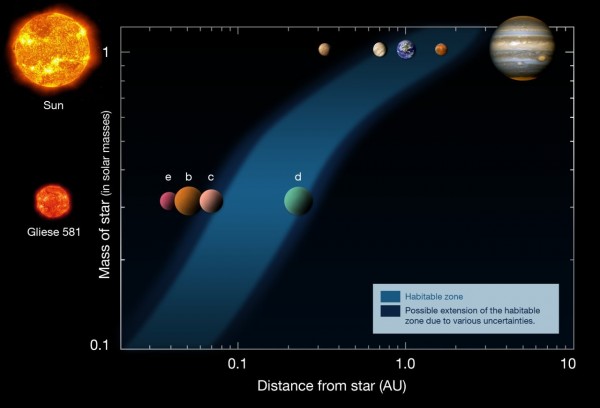
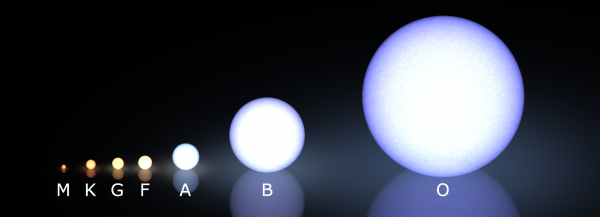
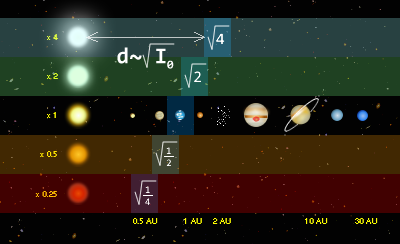
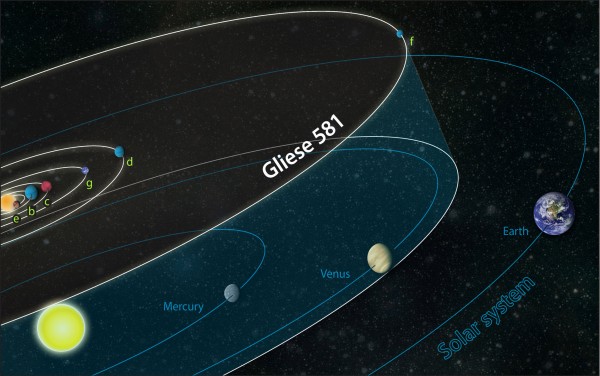
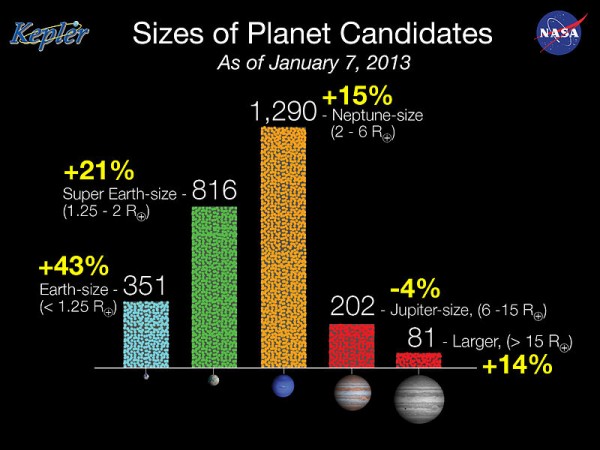
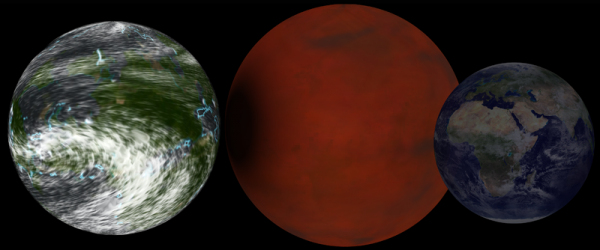
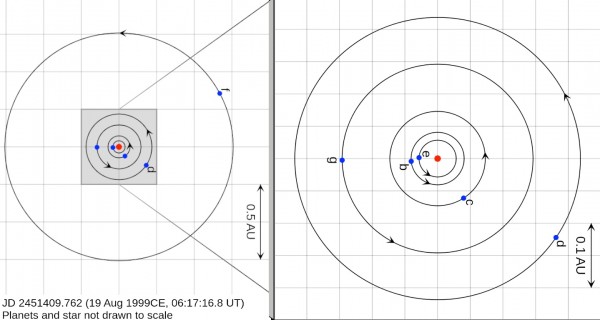

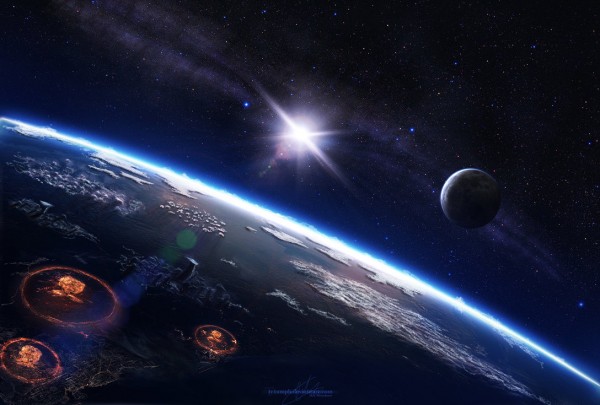
And after reading "Target Selection for SETI: I. A Catalog of Nearby Habitable Stellar Systems" by Jill Tarter and Margaret Turnbull, I suddenly realized that there is a tremendous difference between "Habitable" and "Human-Habitable".
Besides the nice take-down of Steven Vogt here on the grounds of Astronomy, it should be noted that life on earth has flourished everywhere AFTER it arose. Abiogenesis might just take some extra something that we have yet accounted for. There is no guarantee that life is bound to emerge in every instance that heat is applied to every world with water and organics. I'm certainly hopeful that there are lots of critters up there, but until we can definitively reverse-engineer DNA to it's origin, create new life or actually find it elsewhere, we have no reason to assume life anywhere else has flourished at all.
Obviously there is a step from doing perturbation analyses on what is known, life in liquid water, to surface and tidal habitable zones. For one thing, it is reasonably clear that water is the best liquid medium but it is unclear if it is the only possible.
But I get really fed up with the parading around of the tidal lock "problem". Obviously it lowers the frequency of terrestrial habitables (and that is how it is handled here, kudos), as they would have to start out with a denser atmosphere to end up with a comfortable global biosphere. But as we know more, the rough HZs will be finessed. Why, the SHZ has already been changed this year as we start to know more about greenhouses due to AGW (unfortunately). So that is a habitability issue, not an issue of inhabitation.
Same with the ice giants (neptunes, or here gas dwarfs). They shrink the frequency of habitables as well, and we will account for that eventually. On that point, from the videos out of the LPSC, it looks like there is a very clear quantitative change between planets less than 2 Earth radii and those above.
So what about Vogt's announcement? I know it made a splash at the time with those who think he overstated the issue. But he was very clear with his premises (personal judgment, based on extremophiles) and it is consistent with many astrobiologists premises who are looking at extremophiles (and want funding for it). I make the same claim out of the observed speed with which life was established on Earth. Whatever the pathway was to establish life, it was in deterministic terms easy. (Either frequently attempted or with a high success rate.)
It is expected by many that inhabitation maps from (sufficiently finessed) habitability with ~ 100 %. Whether we can use that prediction is another matter, we can look at nitrogenous gases for pre-oxygenated worlds perhaps but then only nearby.
Then Vogt got a little fuzzy on past or present life. I think he mean existing life, and it is true that a prokaryote biosphere may be unhurt by the absence of the plate tectonics that recycles material here. But I'm less sure on that at the moment. On the other hand we know life survived the terrible oxygenation of the planet, regardless of recycling.
The politics of whether Vogt hurt or supported astrobiology was as I remember it the main question asked at the time, the driver to shoot his claim down perhaps. But it is also another question.
For a nearby example, those who attempts to drop the shoe on supersymmetry is making the same mistake (of actual tactics, not political strategy). A 100 % exclusion of supersymmetry isn't possible today or likely never as it can be a factor at Planck scales (if I understand correctly), yet we hear that it is 100 % "already" dead: "I’m not much of a betting man, but if I were, I’d say that SUSY is already dead. It’s just waiting for the coffin nails to be hammered in." Potato, potatoe.
Torbjörn Larsson:
I'm not sure what your point is regarding Vogt. Is he jumping out on an unsupported limb, or is he making a smart bet? I think given how little we know about the very planet in question, not even counting all the unknown variables in estimating the actual probability of life arising, there's no way we can say much of anything beyond speculating that it's at least possible liquid water exists. I think life is probably really common, but does that apply to Gilese g? Who knows?
The situation with Ethan's comments is significantly different. What he's calling dead, and what everyone who isn't a SUSY/String theorist cares about, is the sub-set of the SUSY landscape that can solve the theoretical problems with current physics that it was designed to solve. And there's a lot of very real data regarding very specific and well understood predictions that aren't panning out.
I don't really see how this is a case of po-tay-to po-tah-to.
But then again you were talking about something to do with politics, and tactics vs strategy, which I didn't understand at all. So I might just be missing the point.
"Habitable vs. inhabited" also touches on the question of planets that can be colonized by humans.
Any planet that can support human life will also by definition be infested with simpler life. Even the presence of one fatally infectious species on a planet may be sufficient to make it uninhabitable by humans, absent a complete slate-wipe of a kind that we would regard as morally repugnant.
For this reason I'm inclined to believe that our best cases will be to terraform lifeless worlds, and to engage in "astro-engineering" to build planets from scratch. One version of the latter is to discover or build Earth-sized objects in interstellar space, and provide them with energy from stars in nearby star systems, via means such as solar conversion to microwave laser, to re-conversion at artificial satellites. This has the added benefit of redundancy and independence from any single star as an energy source. (Contrast to Dyson rings, that place enormous populations at risk from dependence on single stars.)
Ultimately the value of finding habitable/inhabited planets, isn't that we may some day colonize them. The intrinsic value of these objects is in the knowledge that can be developed about the similarities and differences of life (simple, complex, and intelligent) throughout the observable universe, and in the potential for mutually-enriching interactions with other intelligent civilizations. The fact that we're engaged with any of these issues today is actually a hopeful sign for our species' ability to think ahead about things that have zero immediate benefit but may be of enormous benefit at some point in the long-term future.
G, something you have forgotten: we humans, for example, cannot be infected by scrapey, which infects sheep and cows.
This despite we have billions of years of shared genetic heritage and only a few percent different biology.
The infectious agents of another planet will not have the billions of years shared genetic code with us.
What makes you think that these organisms will be able to infect us when SIV never could?
While the table comparing Venus, Earth, Gliese 581g, and Mars is nice, its probably not all that necessary. Just pointing out that Venus and Mars are in the habitable zone (like Gliese 581), and you demonstrate the difference between "habitable" and "inhabited."
What about possible life on moons outside our solar system?
"'Habitable vs. inhabited' also touches on the question of planets that can be colonized by humans." - No it doesn't. Scientists are using a completely different definition of Habitability than grandma used to use. They have completely cooped it for their own use so that the average person will do exactly what you are doing, which is to assume when they say they have found another "Twin of Earth" because it is habitable you won't question it.
I created the chart of Global Equilibrium Temperature comparisons because I could do the math and see that they were hyping planets as "habitable" that were actually too hot for any life or too cold for any life, not just people. I added the chart to many exoplanet articles on Wikipeadia, but they have since been hunted down and eliminated because they are too truthful
I find it very deceptive this new fashion amongst astronomers writing about new extrasolar planets using whatever Albedo or Emissivity that puts their newly discovered planet in the best light as a "Twin of Earth" or a "Super-Earth" (rather than just larger terrestrial) . Their speculation gets picked up in the media and hyped as fact, and then that is presented in Wikipedia articles as referenced fact. It's quite sad. You only have too look at the history of the Gilese 581 system, and Gliese 581 c in particular to see how desperately these astronomers want their discovery to be famous at whatever cost.
If you want to check the solar constant of any world for yourself, just multiply the square of star radius with the Stefan-Boltzmann constant, with the 4th power of the Star's effective temperature, and then divide the total by the semi-major axis squared. f=[(R^2)(SBC)(T^4)]/d^2. You have to use meters and Kelvin but it works for any planet system that has those values available. Even if radius or temperature is missing but the luminosity is know, the othercan be calculated.
I don't care if there is an agenda among astronomers to outshine religion with science, what I care is that they are truthful in their attempt. People are going to relize that they were lied to eventually, if we don't ever find any life on other planets, and that "Twin of Earth" becomes fantasy.